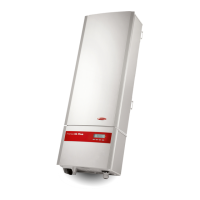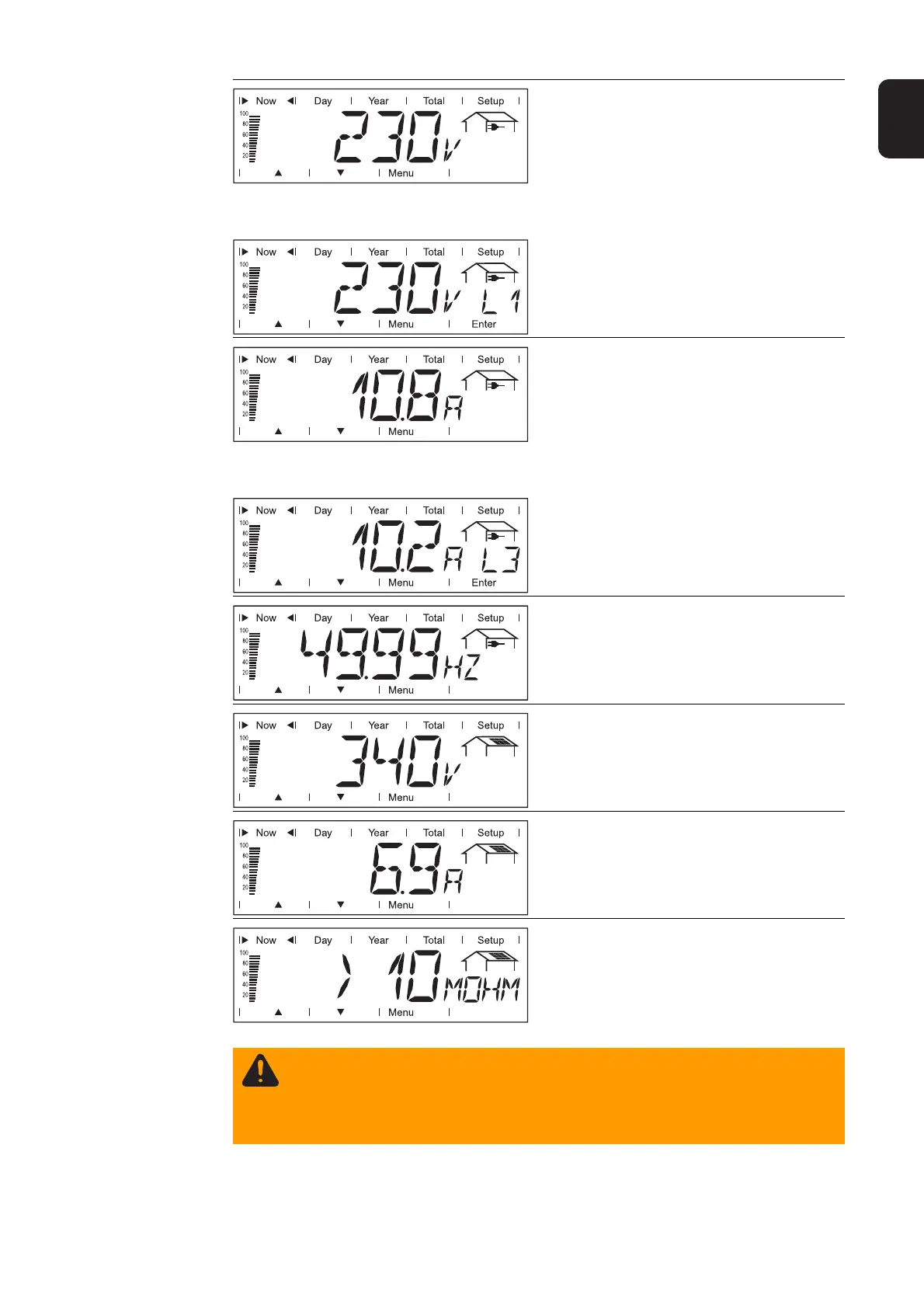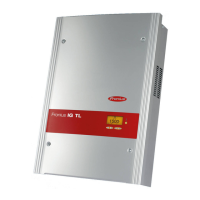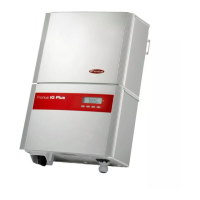99
g
The insulation resistance is the resistance between the positive or negative pole of the
photovoltaic system and the earth potential. If an insulation resistance > 500 kilohms is
shown, this means that the photovoltaic system is adequately insulated.
For example, phase voltage for phase L1:
Grid voltage
External conductor voltage (volts)
The "Enter" key is active for multi-phase
inverters.
- The phase voltage can be displayed
by pressing the "Enter" key.
- The phase voltage of the other phas-
es can be displayed by pressing the
"Up" and "Down" keys.
- You can return to the menu level by
pressing the "Menu" key.
For example, phase current for phase L3:
Output current
Current supplied to the grid at the particu-
lar moment (amperes)
The "Enter" key is active for multi-phase
inverters.
- The phase current can be displayed
by pressing the "Enter" key.
- The phase current of the other phas-
es can be displayed by pressing the
"Up" and "Down" keys.
- You can return to the menu level by
pressing the "Menu" key.
Grid frequency
(hertz)
Solar module voltage
Voltage of the solar modules at the mo-
ment of data display (volts)
Solar module current
Current supplied by solar modules at the
moment of data display (amperes)
Insulation resistance of photovoltaic
system
(megaohms)
For ungrounded solar modules
WARNING! An electric shock can be fatal. The positive and negative poles of the
photovoltaic system should never be touched with an insulation resistance of <
500 kohm. An insulation resistance of < 500 kohm may be due to an inadequately
insulated DC lead or defective solar modules. In the event that the insulation re-
sistance is too low, you must contact your Fronius service partner.

